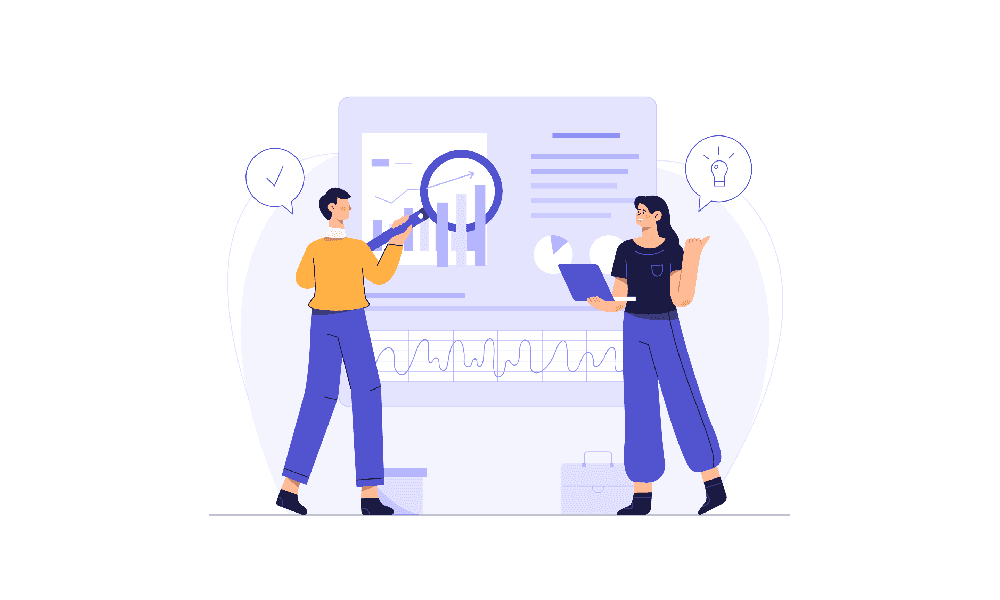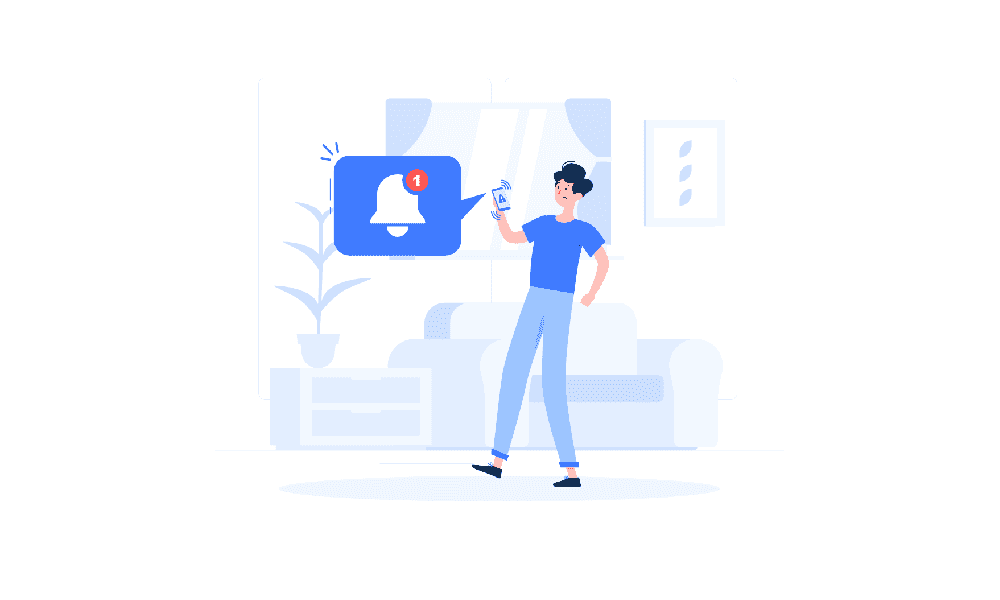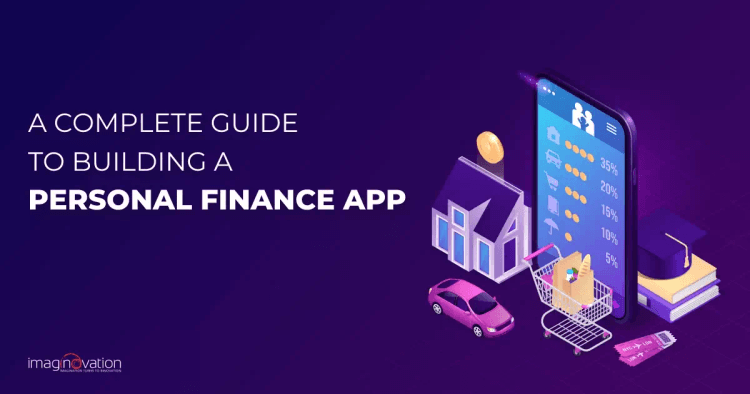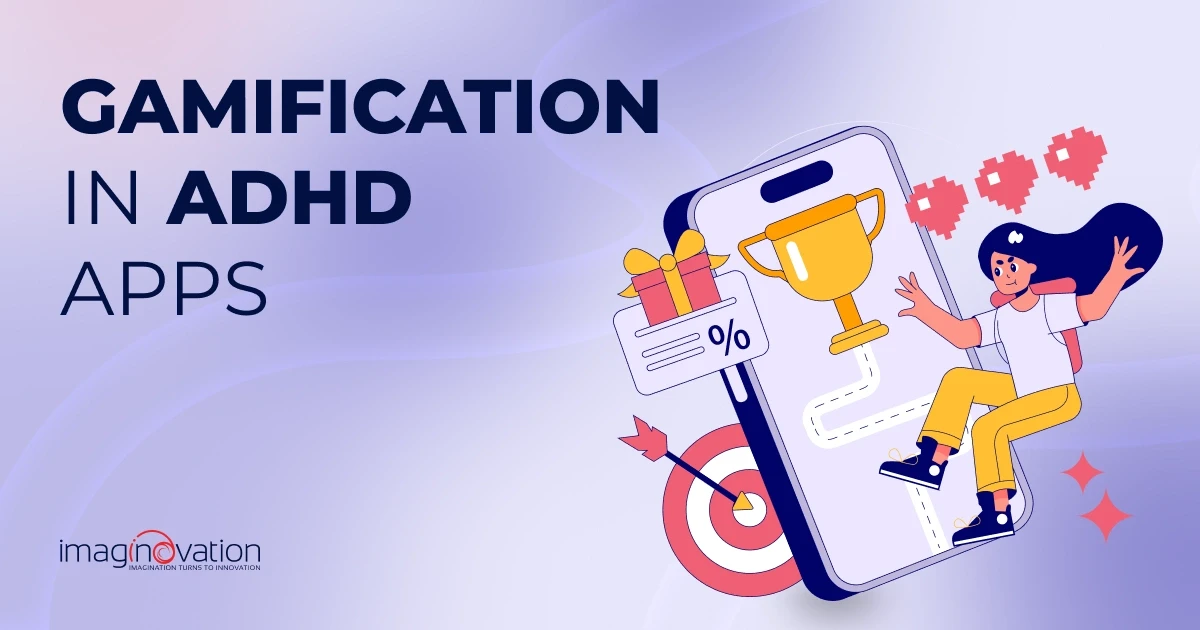Managing personal finances by digging through bills and receipts can be overwhelming.
Personal finance application lets you maintain your budgeting, spending, and investment records on paper and electronic devices for easy access.
So personal finance apps, bringing considerable value, are in high demand and are mushrooming the app stores globally. These money management apps help users track their finances and manage their budgeting and spending habits.
Building a personal finance app is, thus, a good investment for a business.
But do you know all the nuances of developing a unique personal finance app?
Here's a step-by-step guide to building such an app. It will provide an answer to all your doubts and questions.
Read further to learn about the different types of personal finance apps and what features to include in your app.
Let's start by first understanding what exactly a personal finance app is.
What is a Personal Finance App?
Just as there is an app for almost everything today, a personal finance app is a money management application. It helps you regulate and keep track of your financial flow, set a budget, and get meaningful insights about your savings and expenditure.
Market Overview
When building a new personal finance app, ensure it can survive market competition. After all, your and your competition's audience and market segment will remain the same, even though your app's functionality will differ.
That's why it is essential to do thorough market research before launching and even designing a new personal finance mobile application.
Here's a list of major market players
- Mint — This is one of the popular personal finance apps which lets you track your finance for free.
- You Need a Budget — This is one of the best debt payoff and budgeting apps offering educational resources.
- Prism - This is one of the best apps for paying bills. It offers the ability to sync with a vast number of billers.
- Spendee - This is one of the best options to manage shared expenses, as in the case of a household.
- EveryDollar — This is one of the detailed budgeting tools and expense trackers.
- PocketGuard — This is a money management tool with a friendly UI.
In addition to these market players, traditional banks have entered the personal finance management market. Today, many banking apps also feature budgeting tools.
For example, the Alliant mobile banking app.
This means there is additional competition for your product from banks. On the other hand, it also means that banks might be interested in purchasing your app.
Also Read: A Complete Guide to Decentralized Finance
Role of a Personal Finance App

The role of a personal finance app is to make your life easier by helping you manage your finances efficiently.
Personal finance apps simplify financial management and offer a great way to take control of your spending. They provide valuable insights for better money management, offer access to various investment options, provide advice and insurance inputs, and help you prepare for financial emergencies.
Here is a list of the standard functions a personal finance app performs:
- Tracks bills and expenses.
- Calculates income and expenditure.
- Plans out the budget.
- Organizes finance.
- Analyzes the data and generates insightful reports.
- Offers transparency over the user's income and spending.
Also Read: Rising Significance of Blockchain in Finance: Exploring Future Opportunities
Types of Personal Finance App
Two types of personal finance apps are available- simple and complex financial apps.
Let's find out more about these applications..
1. Simple Financial Apps
As the name suggests, this type of personal finance app is straightforward, requiring users to manually input their data or financial information.
In addition to adding all records personally, users must manually categorize each purchase and income.
It offers an easy way for users to keep track of their expenses, plan future investments, and budget.
Advantages:
- There is almost zero risk factor here because none of your bank accounts need to be linked to the app.
- Because of a straightforward app development process and simple features, this app is inexpensive.
Disadvantages:
- Because of the manual data entry, the human error rate of the app remains high.
- Manual data entry also makes the entire procedure time-consuming.
2. Complex Financial Apps
This type of app is more advanced, as it is designed to automate the money management process for users. It allows users to link their cards and bank accounts for automatic data synchronization. With advanced tools, it fetches the necessary information from your accounts.
Advantages:
- This kind of app is much more all-inclusive than a simple financial app. It offers many features to its users and allows them to perform many functions instead of just a few basic ones.
- This app is very efficient because it saves users time.
- Real-time updates are one of this app's most significant benefits, so your user is constantly updated about everything happening.
Disadvantages:
- The app development cost for this type of app is high compared to a simple financial app.
How to Create a Personal Finance App?
Here's a step-by-step approach to creating a personal finance app.
1. Understand Your App User
Knowing your user well can simplify many aspects of app development—it helps in building a better product, identifying the necessary features, and crafting an effective promotional plan for your app.
Therefore, researching and defining critical demographic criteria to create a user persona should be your first step.
But wait! Before you begin reaching out to potential users, you must know who you want to target, their location, age, education, whether they have children, etc.
Answers to these questions will help you determine the features your app should offer.
Additionally, you’ll be able to gauge whether users will be willing to pay for your services.
2. Conduct Competitor Research

This step is crucial as it helps you become aware of what your competitors are up to. Do thorough research on your competition and the kind of fintech app they offer.
Do take care that this research aims not to emulate your competitors but to figure out what they are doing well and what can be improved.
3. Identify The Problem
To build an app, you must identify the problem your new app will solve.
Find an answer to what it is about the existing personal finance solutions that are keeping their users from achieving their goals. Is there any new technology that would make the user experience smooth?
Can your app solve a problem that other existing financial apps have overlooked?
4. Security is Key
Pay attention to the most critical aspect of any financial app: security. Potential users will inevitably ask, "Is my app safe?" This is their biggest concern.
In an era where personal information leaks are a significant issue, and with many people viewing the business models of companies like Facebook and Google as an infringement of human rights, security must be the top priority for fintech solutions.
Here’s how you can enhance the security of your users' data:
- First, implement two-factor authentication, which is an excellent safeguard for your users. It enables user verification using two forms of identification, such as a passcode and a one-time-use code sent via text message or email.
- Limit session duration to a specific time frame so that your app doesn’t run unprotected.
- Be cautious when displaying users' personal information. Avoid using eye-catching and colorful fonts in financial apps to ensure the app remains discreet and safe to use in public places.
- Pay special attention to applying PCI DSS (Payment Card Industry Data Security Standard) and GDPR (General Data Protection Regulation) to your app.
5. Think of All The Features to Include in Your Finance app
Shortlist and start with the essential components that every personal finance app must have. These include:
- Account authorization: Ensure user account authorization is fast, easy, and secure, as it involves handling a lot of private information.
- User profile: Include a feature that allows users to add and edit basic information about themselves.
- Income and expenses tracking: This feature should allow users to control money transactions and provide real-time tracking.
- Notifications: Ensure your users are notified about upcoming payments, increased spending, or reminders to update important information.
Additionally, you can include advanced features in your finance app, such as goal-setting, linking bank accounts/payment services, calculations, additional reports, and more.
6. Select a Tech Stack

Once you're clear about the features you need in your app, it's time to decide on the tools and technologies required to build it. These tools include libraries, databases, programming languages, frameworks, and more.
This is another crucial step in the development process.
First, let's talk about the front end of your app. This is the layer with which your app users will interact. Since it deals with the look and feel of your app, it's important to wisely choose the right frontend tech stack to enhance user engagement.
Key frontend technologies to consider include HTML, CSS, and JavaScript, combined with frameworks.
The backend is responsible for ensuring faster data loading times, complete security, and ease of transactions.
The backend stack can include programming languages such as Ruby, Python, C++, and C#, which are considered ideal for financial solutions.
Additionally, your database should be secure and capable of processing queries quickly. Options like MongoDB or Kibana can be effective choices.
Depending on the complexity of your personal finance app, you may also need to include APIs and AI solution integrations.
Finally, consider whether you want to build a native or cross-platform app. This decision will also impact your choice of tech stack.
Also Read: How Technology Is Transforming the Consumer Lending Industry
7. Build a Convenient UX Design
Managing money should be easy for users with a personal finance app.
An exceptional user experience (UX) is key to your app's success. The look and feel of your app should encourage users to engage with it.
A simple user interface (UI) is essential for achieving a great UX. For example, while an attractive and decorative font might look appealing from a design standpoint, it’s counterproductive in a finance app if it’s difficult to read.
Consider incorporating an intuitive user flow and seamless screen transitions. Ensure users see only the information they need at the moment—avoid overwhelming them with too much data. Additionally, prioritize a smooth onboarding process for users.
8. Testing
Once the development of your personal finance app is complete and your first MVP is ready, it's time for your QA team to test the app.
Since the app handles people's money, neglecting testing could have severe consequences.
The testing process for a personal finance app is similar to that of other apps but needs to be more rigorous.
It's best to involve finance professionals in this process.
Ensure you conduct the following:
- Security testing: Includes penetration testing and vulnerability assessments.
- Data integrity: Involves thorough database testing to ensure data accuracy.
- Usability testing: Checks the user-friendliness of your app.
- Functional testing: Ensures that integrations and interfaces are working correctly.
- Performance testing: Evaluates the app's load capacity, scalability, and performance under various conditions.
Once everything is thoroughly tested and refined, you can launch your app. Remember, launching involves more than just posting the product to app stores. A well-planned marketing strategy is essential to the launch's success, so make sure to give it the attention it deserves.
Also Read: How Finance Companies Use Intelligent Automation to Boost Customer Experience and ROI
Key Features to Include in Your Personal Finance App
Here are the features that make an excellent personal finance app.
1. Registration And Onboarding

The statement - "The simpler, the better" holds for any mobile app, more so for a financial app. However, most financial apps are complex. Therefore, you must work out all the details to make your users comfortable with your solution.
Let's take the registration process. It is crucial to make the process of registration smooth.
A lot of data needs to be verified in a personal finance app. You can decide to split the registration form into multiple steps. No more than two to three questions should be asked at every step.
In addition, to enhance security, including biometric authentication here.
2. Account Integration
Your budget management software should be able to gather all financial accounts, such as credit cards, debit cards, loans, bank accounts, and mutual funds of the app user.
In short, your app should be a one-stop solution for everything about money management.
3. Insightful Advice via AI Chatbots

AI or Artificial Intelligence in fintech can vastly increase your team's productivity, even surpass humans in certain aspects.
Because customers look for conciseness, accuracy, and responsiveness, especially in finance-related issues, AI chatbots prove beneficial here.
AI allows chatbots to analyze user behavior. As a result, they bring a lot of value to the users by giving them insightful advice and desirable information in no time, turning them into a financial coach.
4. Real-time Spending Tracker
A money management app is incomplete without a real-time expenditure tracking feature. Such a feature comes in handy as it saves time and money for users.
You should not need your consumers to switch apps to track where they are spending/investing their money. This should be handled on a single platform.
5. Personalization
By customizing the user experience in your app as per the user's requirements, your personal finance app can become more appealing to the user. For example, display the user's transaction history in an interestingly designed infographic or customized reports. You can also create a helpful chatbot for the user.
6. Gamification
Gamification is a fascinating concept. App developers across many industries are using it these days. It's a wonderful way of keeping your users engaged.
By gamifying the user experience, you encourage users to interact with the application more frequently. On the other hand, the user considers a gamified money app a fun way to help them achieve their saving goals better.
By employing the gamification concept in your personal finance app, you can
- Incentivize your users to save more
- Improve user's daily financial management
- Enhance user's knowledge of financial services and products
7. 24x7 Customer Support
Constant customer support in a financial app is of great importance. Customer support in multiple languages can get you clientele from across the world and keep your customers happy and loyal.
8. Alerts and Notifications

This is one of the most critical features included in a finance app. Users in case of need notifications and alerts
- More spendings
- Low balance in the account (wallets or bank)
- Upcoming bills
- Interesting investment deals
9. Points and Rewards
The app users need motivation from time to time. That's why you must keep offering them rewards and points.
They can be in the form of discounts, cashback, coupons, and credits.
10. Financial Advice & Consultation
Make sure your app also provides financial suggestions and advice from experts.
This would benefit users as they'll learn about additional ways to save money, invest, and keep track of their expenses.
In addition, you can include the following advanced features in your personal finance management solution.
- Common currency converter
- Calculator
- Credit score calculator
- Tax calculator
Build A Personal Finance App with Imaginovation
Personal finance apps are in high demand—and for good reason. They offer a one-stop solution for money management and enable users to budget smartly.
Thanks to the intelligent algorithms used in these apps, users receive alerts and notifications about mandatory payments and unplanned expenses.
If you’re looking to launch a personal finance app, we specialize in Fintech Mobile App Development. Imaginovation can help turn your unique finance idea into reality. Our team will work with you to build an app that offers a frictionless user experience and advanced features for money management.
Imaginovation is an award-winning web and mobile app development company with vast experience crafting remarkable digital success stories for diverse companies.
Ready to build an app, but not sure where to start?
We've got you covered. Click the button below to get started.





